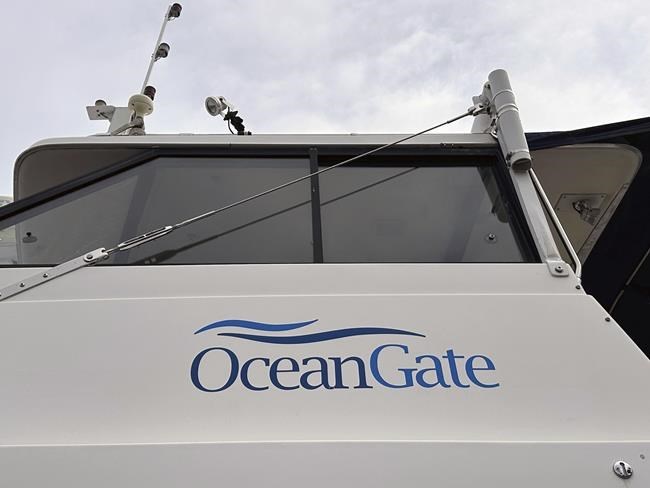SEATTLE (AP) — The company whose submersible vanished in the North Atlantic on a tourist dive to the wreck of the Titanic was repeatedly warned that there might be catastrophic safety problems posed by the way it was developed, documents show.
With five people aboard a vessel that if still functioning would have a dwindling amount of oxygen, an expanding international fleet of ships and airplanes is searching for the Titan, operated by OceanGate Expeditions. The undersea exploration company based in Everett, Washington, has been making yearly voyages to the Titanic since 2021.
In the first piece of good news since the search began, a Canadian aircraft detected underwater noises, though the vessel has not been found, the U.S. Coast Guard reported early Wednesday.
David Lochridge, OceanGate’s director of marine operations, wrote an engineering report in 2018 that said the craft under development needed more testing and that passengers might be endangered when it reached “extreme depths,” according to a lawsuit filed that year in U.S. District Court in Seattle.
OceanGate sued Lochridge that year, accusing him of breaching a non-disclosure agreement, and he filed a counterclaim alleging that he was wrongfully fired for raising questions about testing and safety. The case settled on undisclosed terms several months after it was filed.
Lochridge's concerns primarily focused on the company's decision to rely on sensitive acoustic monitoring — cracking or popping sounds made by the hull under pressure — to detect flaws, rather than a scan of the hull. Lochridge said the company told him no equipment existed that could perform such a test on the 5-inch-thick (12.7-centimeter-thick) carbon-fiber hull.
“This was problematic because this type of acoustic analysis would only show when a component is about to fail — often milliseconds before an implosion — and would not detect any existing flaws prior to putting pressure onto the hull,” Lochridge's counterclaim said.
Further, the craft was designed to reach depths of 4,000 meters (13,123 feet), where the Titanic rested. But, according to Lochridge, the passenger viewport was only certified for depths of up to 1,300 meters (4,265 feet), and OceanGate would not pay for the manufacturer to build a viewport certified for 4,000 meters.
OceanGate's choices would “subject passengers to potential extreme danger in an experimental submersible,” the counterclaim said.
However, the company said in its complaint that Lochridge “is not an engineer and was not hired or asked to perform engineering services on the Titan.” He was fired after refusing to accept assurances from OceanGate's lead engineer that the acoustic monitoring and testing protocol was, in fact, better suited to detect any flaws than a scan would be, the complaint said.
OceanGate Chief Executive Stockton Rush defended the approach in a speech to a conference in Seattle last year hosted by the tech news site GeekWire. He described how he had taken a prototype down to 4,000 meters: “It made a lot of noise,” he said.
So he brought the vessel back up, and on a second dive it made the same troubling noises, even though it should have been dramatically quieter. The company scrapped that hull, which had been constructed by a marine manufacturer, and built another one with an aerospace supplier, Rush said.
In an emailed statement, a spokesman for the company said the missing sub was completed in 2020-21, so it would not be the same as the vessel referenced in the lawsuit.
OceanGate also received another warning in 2018, this one from the Marine Technology Society, which describes itself as a professional group of ocean engineers, technologists, policy-makers and educators.
In a letter to Rush, the society said it was critical that the company submit its prototype to tests overseen by an expert third party before launching in order to safeguard passengers.
Rush had refused to do so.
Rush was piloting the vessel that is now missing.
The letter, reported by the New York Times, said society members were worried that “the current experimental approach adopted by Oceangate could result in negative outcomes (from minor to catastrophic) that would have serious consequences for everyone in the industry.”
In a 2019 interview with Smithsonian magazine, Rush complained that the industry’s approach was stifling innovation.
“There hasn’t been an injury in the commercial sub industry in over 35 years,” he said. “It’s obscenely safe because they have all these regulations. But it also hasn’t innovated or grown — because they have all these regulations.”
Gene Johnson And Robert Jablon, The Associated Press




